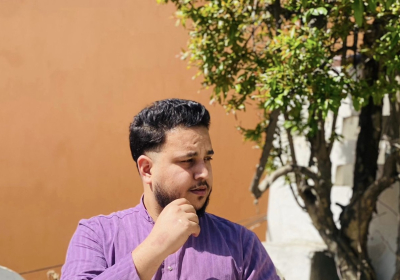
Alarming Rise of Drug Usage in Doda City
- By TNL Desk --
- Friday, 02 Aug, 2024
The Alarming Rise of Drug Usage in Doda City, Jammu and Kashmir, India: Causes, Consequences, and Strategies for Prevention
Introduction
In recent years, the picturesque town of Doda in Jammu and Kashmir has witnessed a disturbing rise in drug usage, mirroring a global trend that is impacting many small towns and cities. Known for its stunning landscapes and cultural heritage, Doda is now grappling with a crisis that threatens the very fabric of its society. The increasing prevalence of drug abuse among the youth and other demographics in Doda is a multifaceted issue that demands immediate attention and action. This essay seeks to explore the underlying causes of this problem, examine its societal consequences, and propose potential solutions to curb the menace of drug abuse in Doda.
Causes of Increased Drug Usage
Several factors contribute to the rise of drug usage in Doda, reflecting a complex interplay of social, economic, and psychological influences. Understanding these factors is crucial for developing effective prevention and intervention strategies.
1. Peer Pressure and Social Influence
Peer pressure plays a significant role in initiating drug use, especially among adolescents and young adults. In Doda, the influence of peers who engage in drug consumption can be compelling, leading others to experiment with drugs to fit in or gain acceptance. The glorification of drug use in certain social circles can create an environment where drug abuse is perceived as normal or even desirable behavior.
2. Psychological Factors
Mental health issues such as depression, anxiety, and stress are increasingly recognized as significant contributors to drug abuse. In Doda, the stigma associated with mental health problems often discourages individuals from seeking help, leading them to self-medicate with drugs to alleviate their psychological distress. The lack of mental health services and support systems further exacerbates this issue, leaving many individuals without the necessary resources to cope with their struggles.
3. Easy Accessibility and Lack of Regulation
The availability of drugs in Doda has become alarmingly easy, with reports indicating a rise in the illegal trafficking of narcotics. The porous borders of the region and inadequate law enforcement contribute to the ease of obtaining drugs, making it difficult to control their spread. The absence of stringent regulations and oversight allows drug peddlers to operate with relative impunity, further fueling the crisis.
Consequences of Drug Usage
The increase in drug usage in Doda has far-reaching consequences that extend beyond the individual to impact families, communities, and society as a whole.
1. Health Implications
Drug abuse poses severe health risks, including addiction, overdose, and the spread of infectious diseases such as HIV/AIDS and Hepatitis C through needle sharing. In Doda, the rise in drug-related health issues places a significant burden on the already strained healthcare system, leading to increased morbidity and mortality rates among users. The long-term effects of drug abuse can result in chronic health problems, diminished quality of life, and premature death.
2. Social and Family Disintegration
The societal fabric of Doda is being eroded by the pervasive impact of drug abuse. Families often bear the brunt of the problem, experiencing emotional turmoil, financial strain, and social stigma. The breakdown of family relationships and the neglect of responsibilities can lead to a cycle of dysfunction that perpetuates the cycle of drug abuse. Additionally, the rise in drug-related crime and violence contributes to a sense of insecurity and instability within communities.
3. Impact on Youth and Education
The youth of Doda are particularly vulnerable to the consequences of drug abuse, with many dropping out of school and college due to addiction-related issues. The disruption of education not only limits future opportunities for individuals but also hampers the overall development of the region. The potential of a generation is at risk,
Strategies for Prevention and Intervention
Addressing the rising drug usage in Doda requires a comprehensive and multifaceted approach that involves collaboration between government agencies, healthcare providers, educational institutions, and community organizations. The following strategies are essential for effectively combating the drug crisis in Doda.
1. Strengthening Law Enforcement and Regulation
Enhanced law enforcement measures are crucial to curbing the availability of drugs in Doda. This includes increasing border security, conducting regular crackdowns on drug trafficking networks, and implementing stricter penalties for drug-related offenses. Effective regulation and oversight can help reduce the supply of drugs and deter individuals from engaging in illegal activities.
2. Expanding Access to Education and Employment Opportunities
Addressing the socioeconomic factors contributing to drug abuse requires investments in education and employment. By improving access to quality education and vocational training, individuals are empowered with the skills and knowledge necessary to pursue meaningful careers. Creating job opportunities and promoting economic development can provide individuals with alternatives to drug use, fostering a sense of purpose and stability.
3. Enhancing Mental Health Services
Improving access to mental health services is critical for addressing the psychological factors driving drug abuse. Establishing mental health clinics, providing counseling and therapy, and raising awareness about mental health issues can help reduce the stigma associated with seeking help. Early intervention and support for individuals struggling with mental health challenges can prevent them from turning to drugs as a coping mechanism.
4. Implementing Community-Based Programs
Community-based programs play a vital role in preventing drug abuse by fostering a sense of belonging and support among individuals. Initiatives such as awareness campaigns, support groups, and recreational activities can engage the community in efforts to combat drug abuse. Involving local leaders, educators, and parents in these programs ensures a collective approach to addressing the issue and promotes positive behavioral changes.
5. Educating Youth on Drug Awareness
Education is a powerful tool in preventing drug abuse among the youth of Doda. Schools and colleges can incorporate drug awareness programs into their curricula, providing students with information about the dangers of drug use and strategies for resisting peer pressure. Engaging young people in open discussions about the risks and consequences of drug abuse empowers them to make informed decisions and build resilience against negative influences.
Conclusion
The increase in drug usage in Doda City, Jammu and Kashmir, presents a significant challenge that necessitates immediate and concerted action. By understanding the underlying causes, acknowledging the consequences, and implementing effective prevention and intervention strategies, the community can work towards mitigating the impact of drug abuse. Collaborative efforts between government, healthcare providers, educators, and community members are essential for creating a safer, healthier, and more prosperous future for Doda. Through awareness, education, and empowerment, Doda can overcome the challenges posed by drug abuse and pave the way for a brighter tomorrow.
This essay outlines the complexity of the drug issue in Doda and emphasizes the need for a well-rounded approach to tackle the crisis effectively. It provides a comprehensive analysis of the problem and suggests actionable solutions to foster positive change within the community.
Farhan Tak
[email protected]





